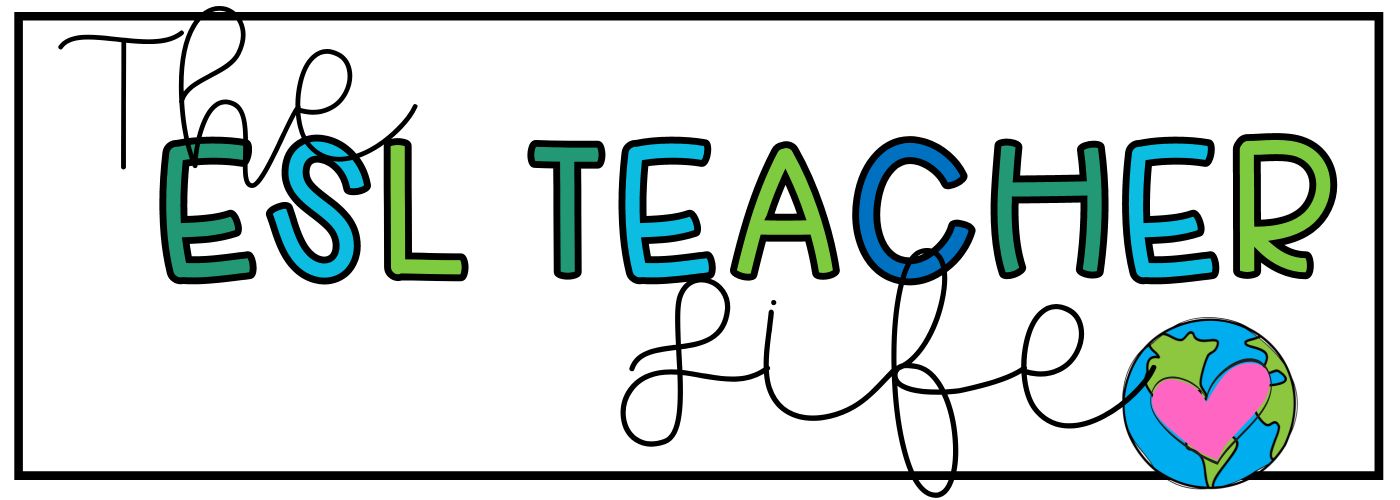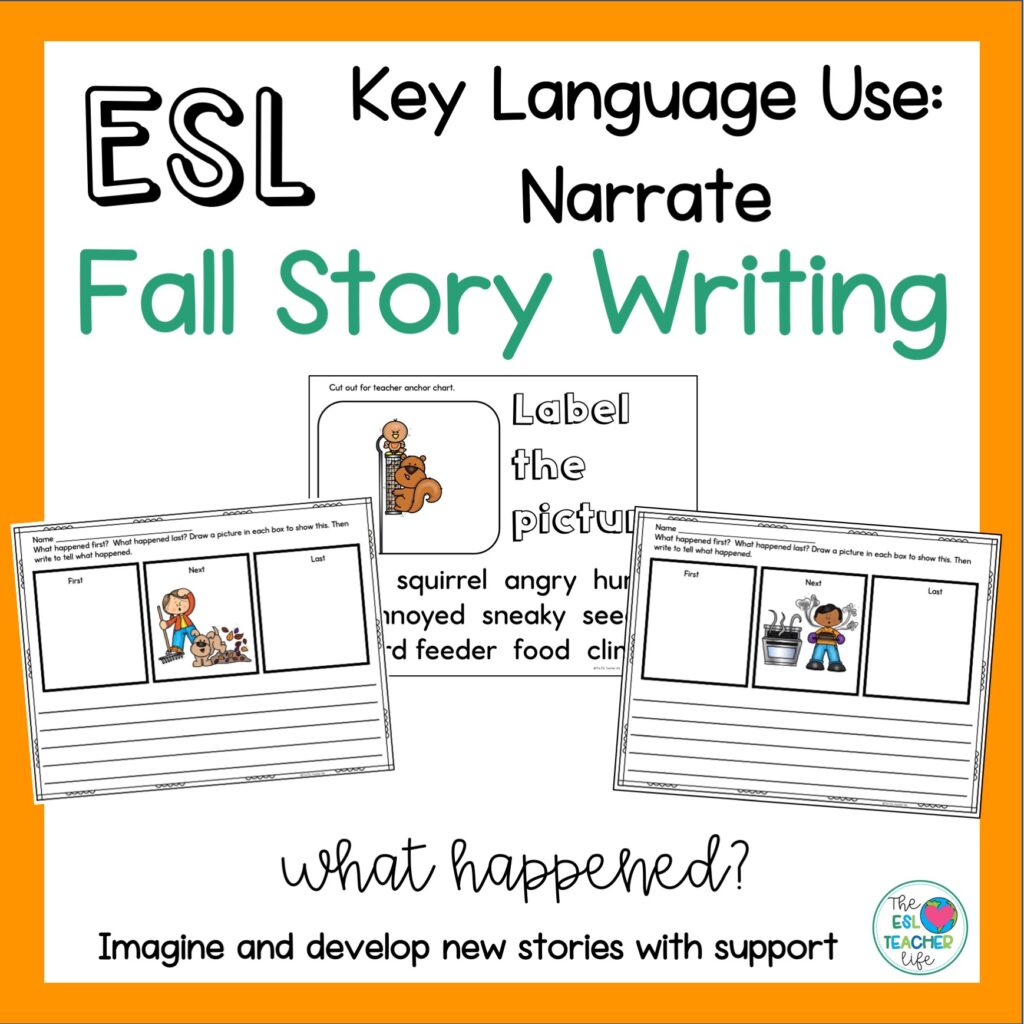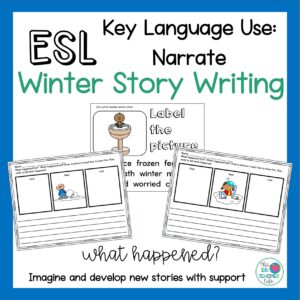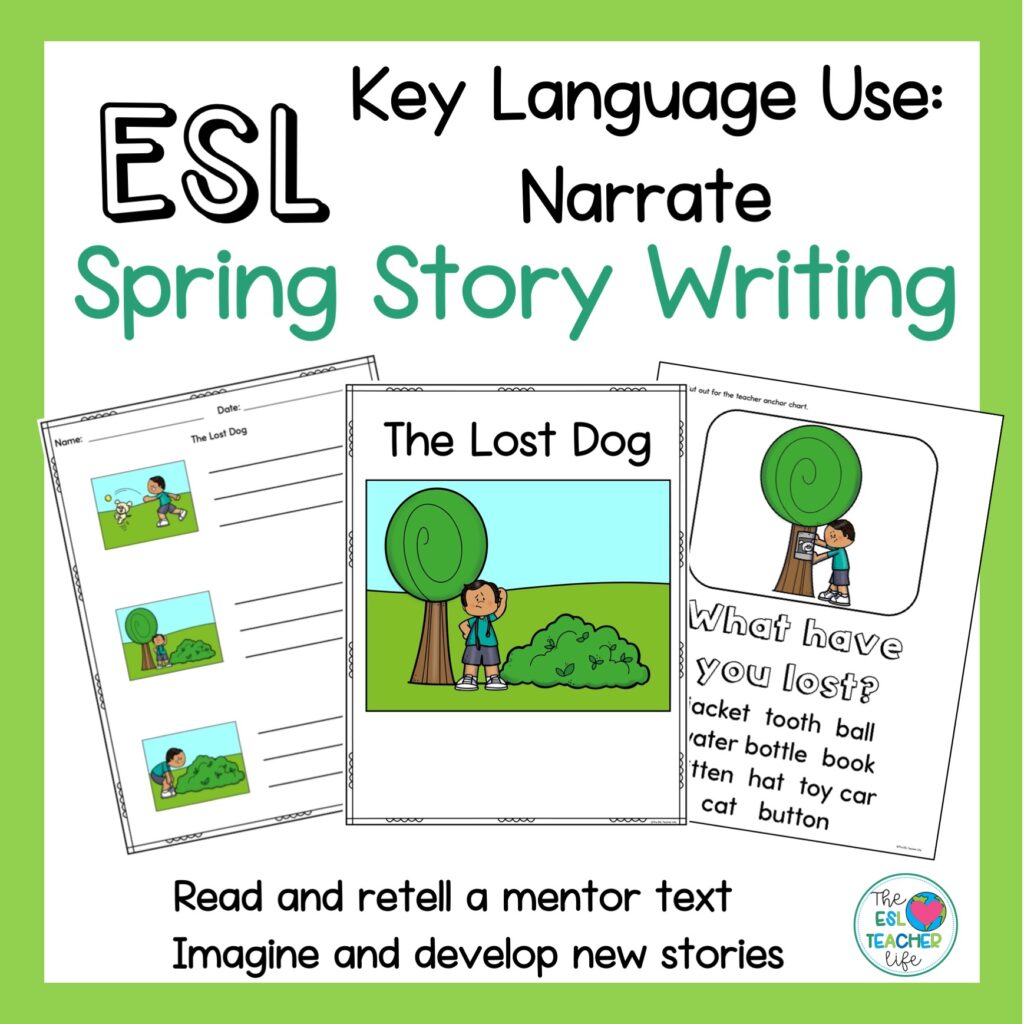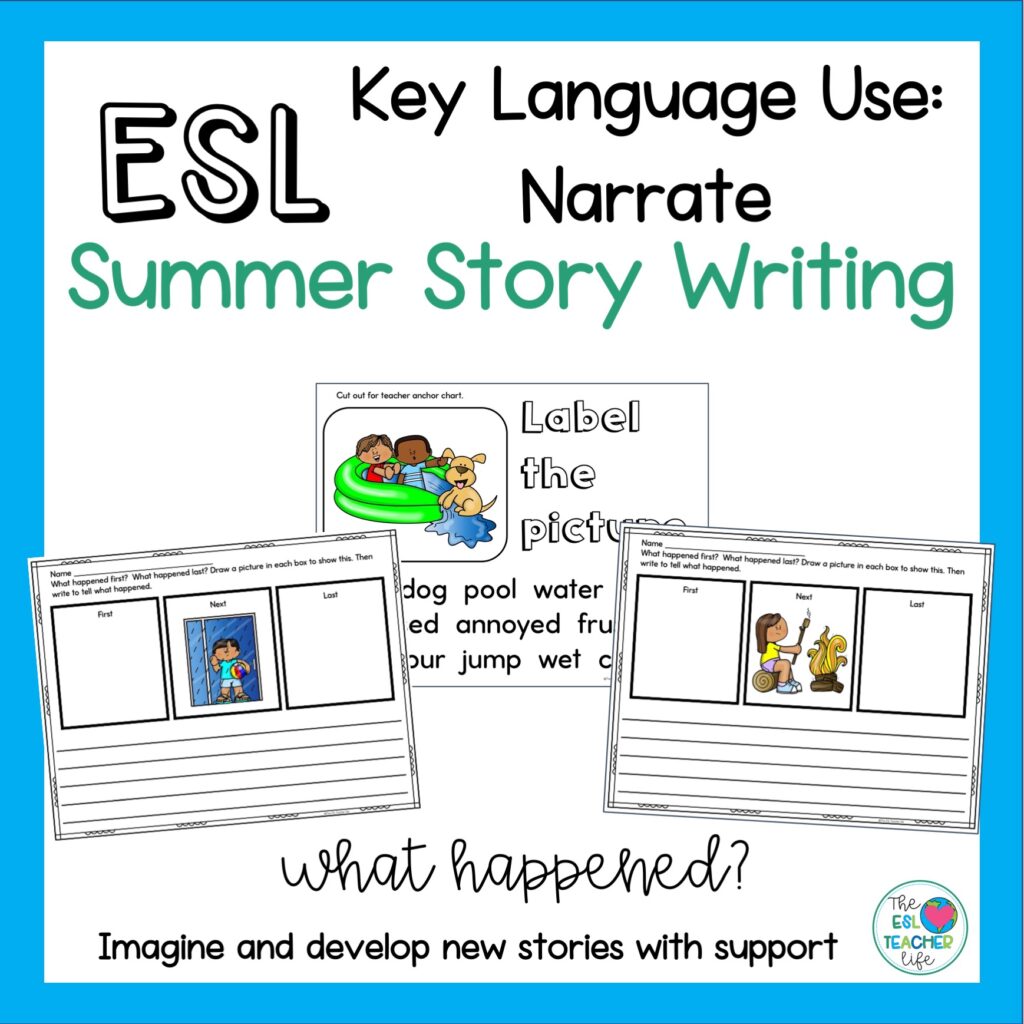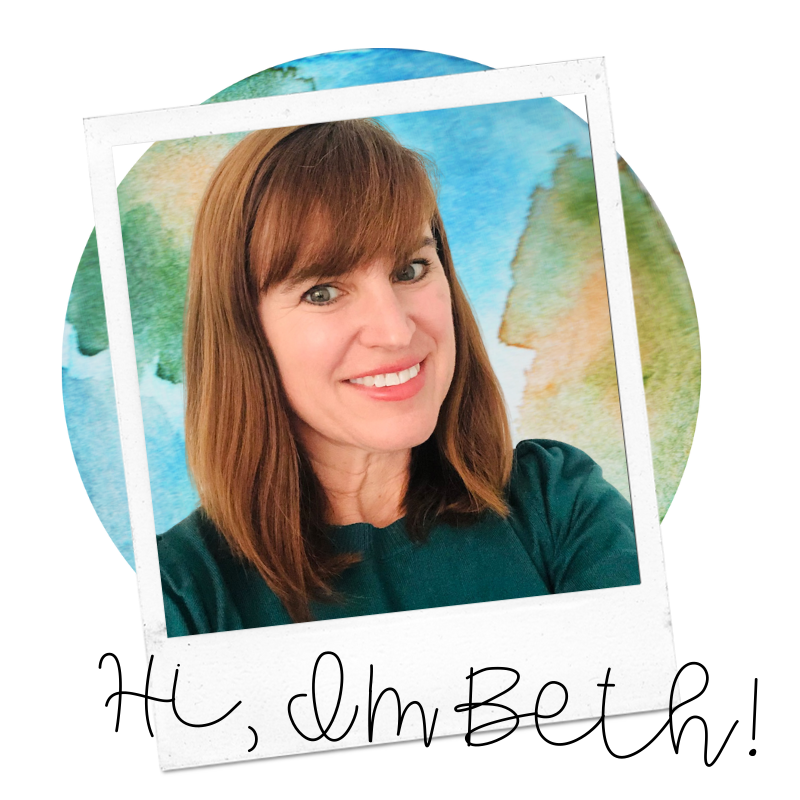Using WIDA Key Language Uses
A great place to start when planning ESL writing activities? WIDA Key Language Uses. To all my friends who have no curriculum, no direction, and no resources, think about these four: narrate, inform, explain, and argue. I start the school year with narrate because it has a lot of sequencing and describing work that is helpful to all levels of English learners. It also gives me a framework for planning more ESL writing activities.
Key Language Use: Narrate
I can dive more into the standards if it is helpful but for now let’s see an example. What can students narrate? Anything and everything! Their weekend, their favorite movie, a classroom read aloud, fairy tales! BUT you say, they look at me lost when I tell them to write. So how to support them? You need two things before you begin: what do the students already know, and what do they need to learn?
I know in one of my intermediate groups everyone can confidently write a complete sentence. But these students need to know how to narrate a sequence of events, both in speaking and in writing. I also know they might need additional support to move from sentence writing to story writing.
Writing a Sequential Story
For this writing activity, I showed the students a picture to help us brainstorm ideas, build vocabulary, and generate interest in writing. I had a few words I wanted to make sure we used in discussion, and had them close by so I could integrate them into the lesson.
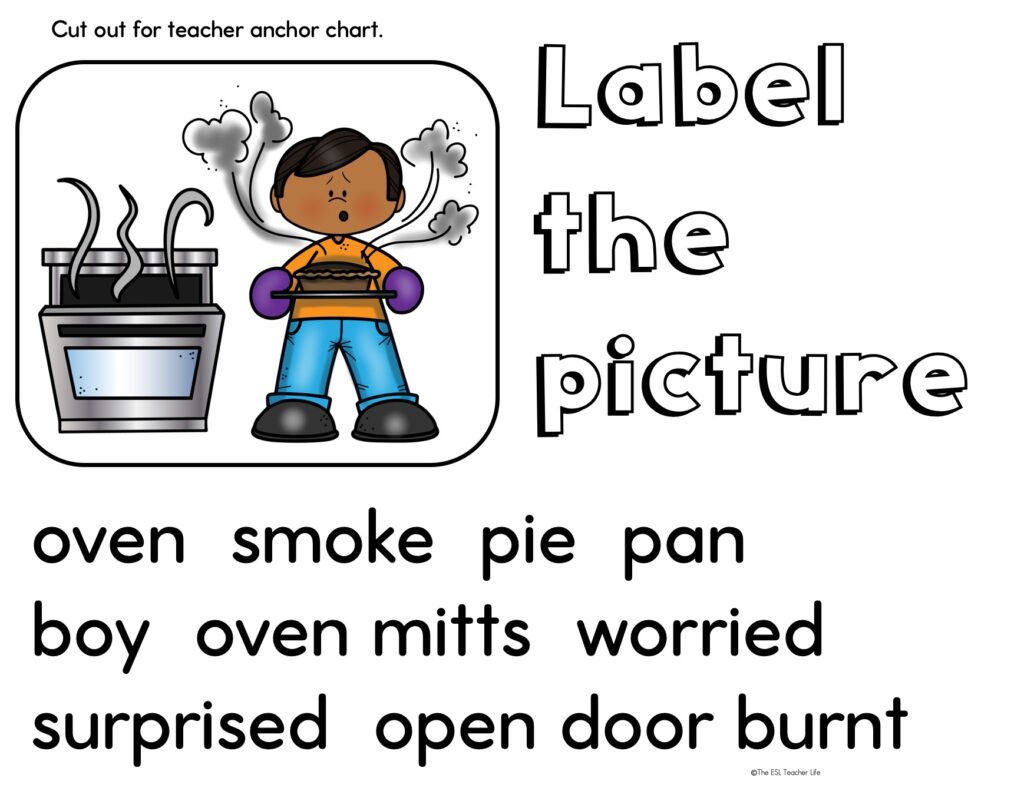
I recorded students’ ideas about the image in the form of an anchor chart, and suggested words when they seemed to reach for the needed vocabulary.
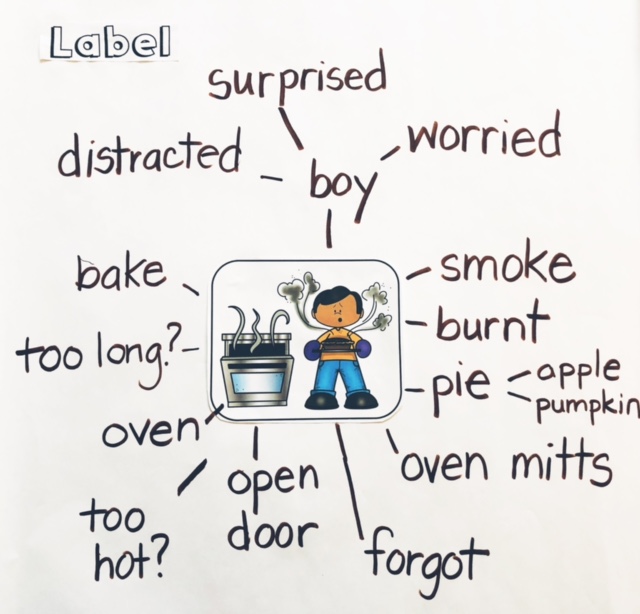
Students also discussed what could have led to this event and what could have happened afterward. Students drew pictures and wrote to narrate their sequence of events.
Transition Words
I taught students that transition words could help support the movement from one event to another. I posted the list of possible transition words and reminded them to include them in their writing. This is something we will continue to work on throughout the year, both in speaking and writing.
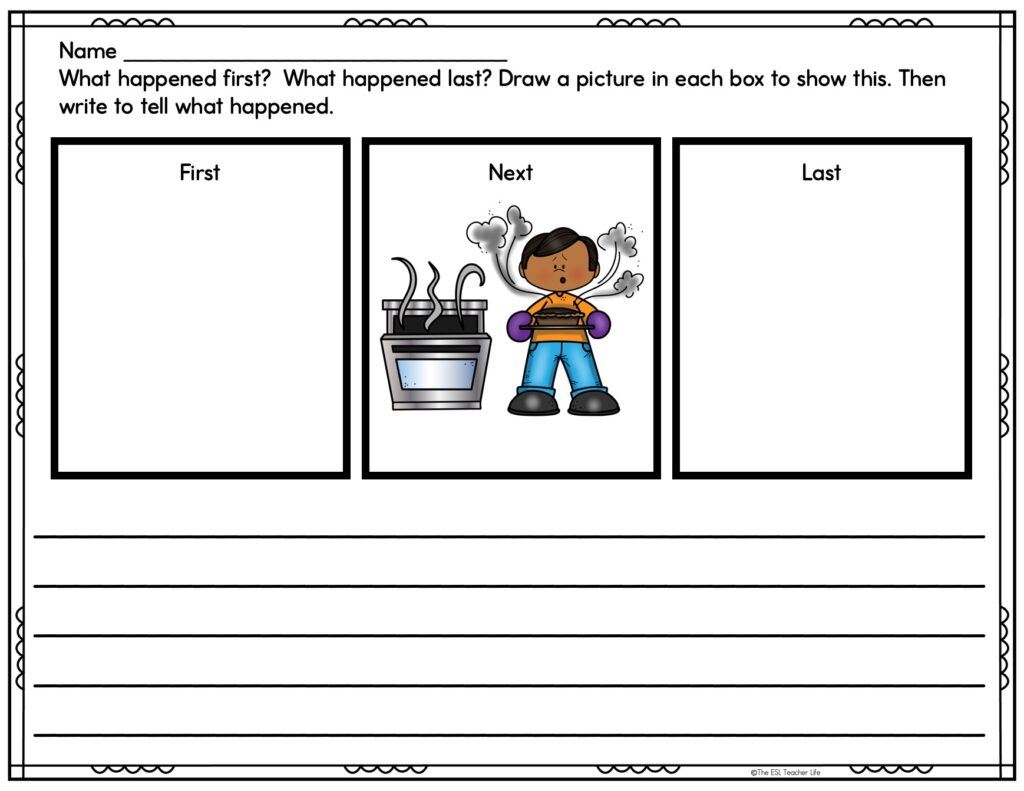
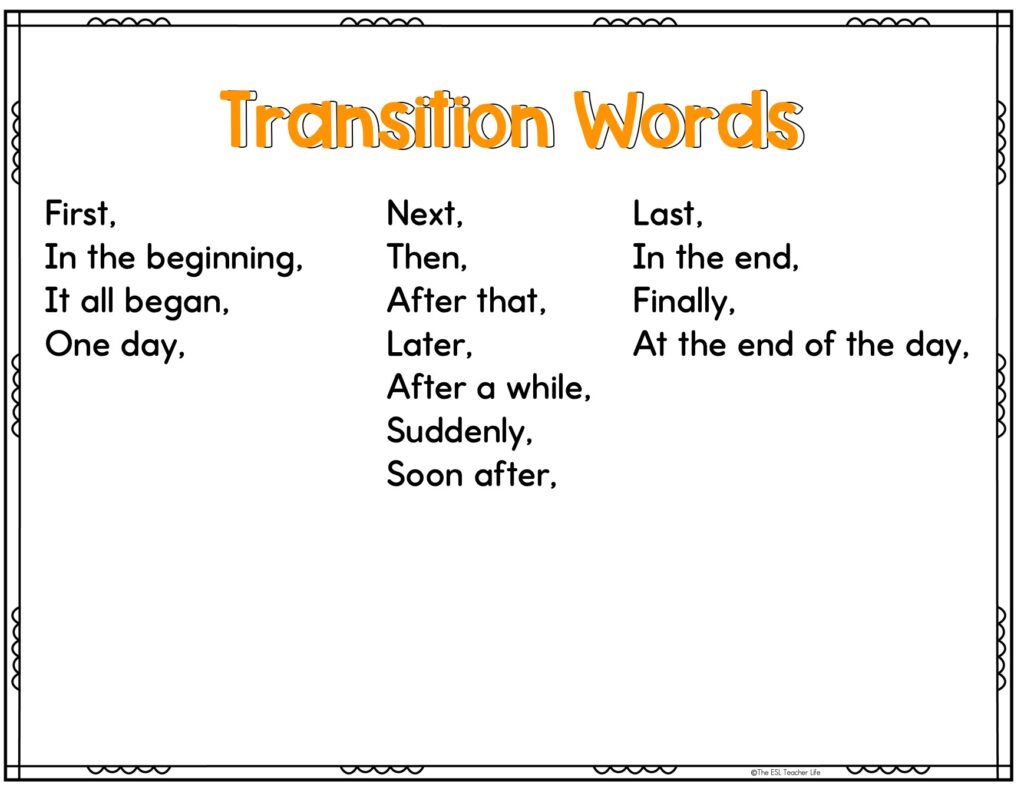
Here is a quick example of my expectation.
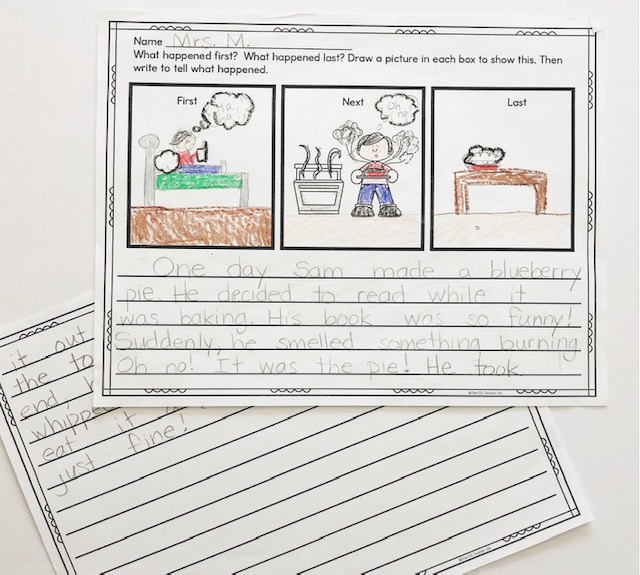
It was a fun and successful lesson. Here is the link to the resource below in case you are interested. You can also use this framework with any narrative writing lesson. Just decide on a theme or topic (best part of a school day, favorite fall activity), brainstorm related vocabulary, practice retelling stories orally, draw pictures to plan, then write. Add in related mentor texts, a mini lesson on transition words, goal setting, peer editing and sharing, and you have a week’s worth of small group activities working on all four domains.
More ESL Writing Activities
Questions? Come connect with me on instagram @the_esl_teacher
You might also like my sentence writing blog post.
